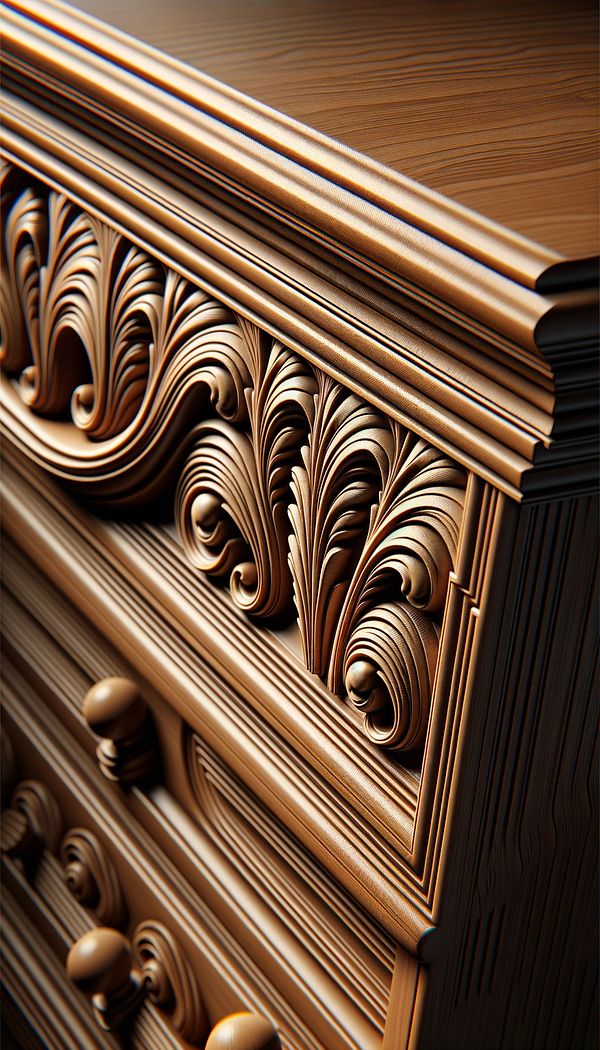What is Cockbeading?
Cockbeading is a decorative moulding used in fine cabinetry.
Description
Cockbeading is an ornamental design detail commonly found in fine cabinetry. It is a type of moulding characterized by its raised, narrow strip, often with a rounded or profiled edge, that is applied to the edges of drawers, doors, and occasionally shelves. The primary purpose of cockbeading is to add a refined touch to furniture and joinery, enhancing the overall aesthetic appeal of the piece.
This decorative element dates back to the 17th century and is particularly associated with traditional and period furniture styles, such as the Georgian and Victorian eras. It can be subtle or more pronounced, depending on the design requirements, and is often used to contrast with the main body of the piece, highlighting fine craftsmanship and attention to detail.
In addition to its decorative function, cockbeading also serves a practical role by providing a slight protective barrier to the edges of furniture components. This can help reduce wear and tear over time, preserving the look and integrity of the piece.
Usage
Cockbeading is often used in the creation of high-end furniture pieces, such as cabinets, dressers, and historic reproduction furniture. It is also a feature in bespoke kitchen design, adding an element of sophistication to drawer fronts and cabinet doors.
FAQs
-
Is cockbeading only used in traditional furniture styles?
While cockbeading is most commonly associated with traditional and period furniture styles, it can also be incorporated into contemporary designs as a nod to classic craftsmanship.
-
Can cockbeading be added to existing furniture?
Yes, cockbeading can be retrofitted to existing furniture pieces by a skilled craftsman, offering an upgrade in terms of both aesthetics and durability.
-
What materials are used for cockbeading?
Cockbeading is typically made from the same material as the furniture piece itself, often wood, to ensure a cohesive look. However, it can also be made from contrasting materials to highlight its decorative appeal.
Practical Application
When looking to add a touch of elegance to your furniture design, consider incorporating cockbeading into the edges of drawers, doors, or even shelves. Ensure consistency in the style and material of the cockbeading with the main piece for a seamless and refined look. For the best results, seek the expertise of a skilled furniture maker or restorer.
-
Architectural Elements199 articles
-
Design Styles478 articles
-
Furniture Types599 articles
-
Decorative Techniques322 articles
-
Fabrication & Craftsmanship133 articles
-
Squab CushionA squab cushion is a thick, upholstered, flat seat cushion.
-
GrassclothGrasscloth is a type of wallpaper made from natural woven fibers.
-
RococoRococo is an elaborately ornamental late baroque style of decoration prevalent in 18th-century continental Europe.
-
VintageVintage refers to items, especially furniture and decor, from a previous era that have a sense of history and timeless appeal.
-
LatticeLattice is a framework consisting of a crisscrossed pattern of strips of material.
